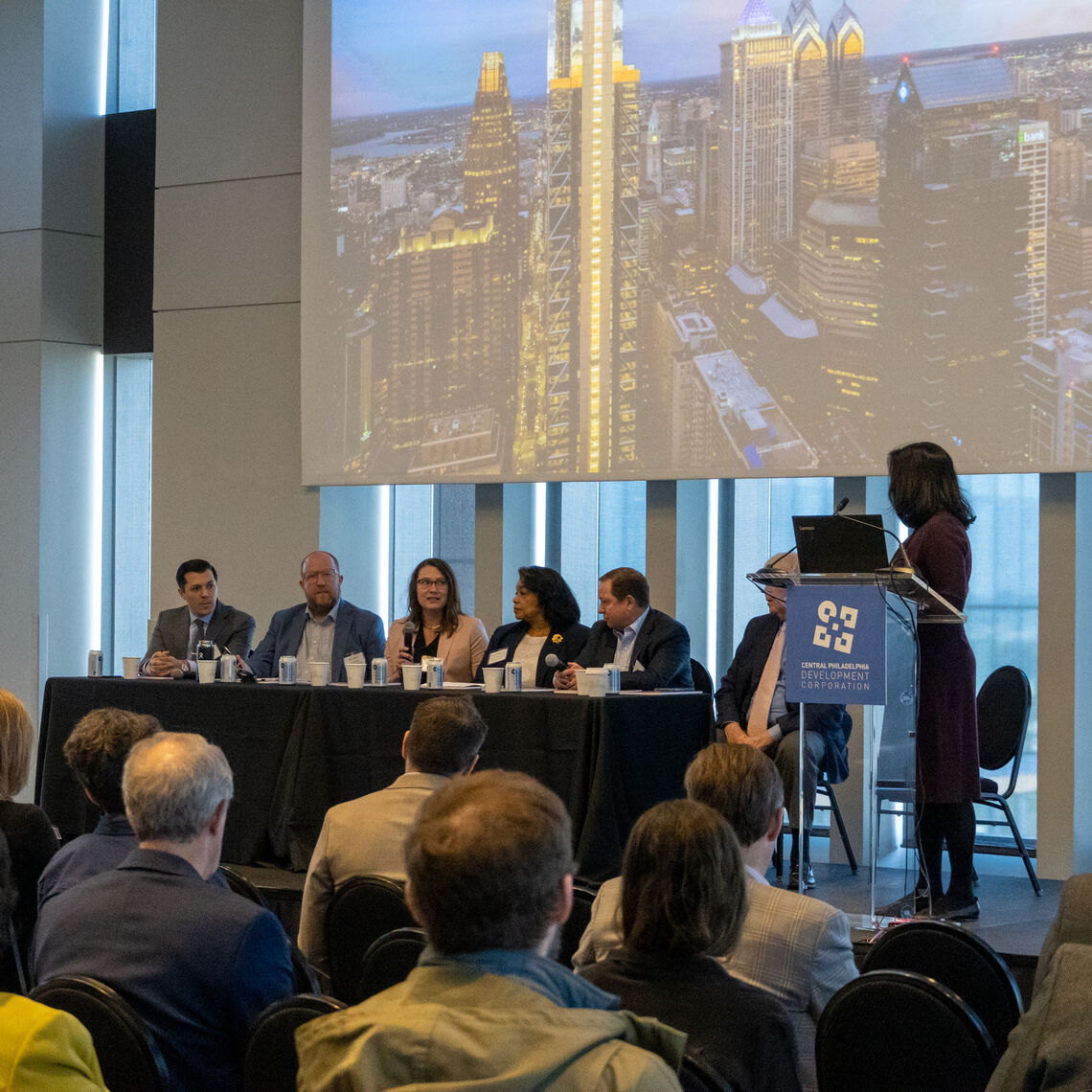
blog
Center City’s Recovery: A Recap of the CPDC April 2023 Meeting
“Good news is good news. Crossing that line to restore all the job lost in 2020 is a good sign,” noted Center City District (CCD) President Paul Levy in the kick off presentation of our April Central Philadelphia Development Corporation (CPDC) meeting.
Following a presentation by Levy and CPDC Executive Director Prema Katari Gupta highlighting the newly released State of Center City Philadelphia 2023 report, a discussion on Center City’s recovery featured insights in real estate, housing, arts and culture and more, from a panel of experts:
- Patricia Wilson Aden, President & CEO of the Greater Philadelphia Cultural Alliance;
- Ryan Ade, Senior Managing Director and Philadelphia Office Co-Head at JLL;
- Rija Beares, Greater Philadelphia Market Leader for CBRE;
- Gianni Parente, Regional Investment Officer at EQT Exeter, who recently worked on the new One Cathedral Square project by Logan Square; and
- Matt Rader, President of the Pennsylvania Horticultural Society, whose recent Philadelphia Flower Show returned to the Pennsylvania Convention Center for the first time since the pandemic
Read along for several key themes from the discussion, and learn how you can join CPDC to get access to these exclusive conversations.
Creating New Habits for Everyday Life
To kick off the panel discussion, the panelists discussed some of their new habits and behaviors since 2020. One that remained a constant throughout the discussion was going to Center City for reasons other than just work. Aden mentioned how she uses Center City as a social setting. “I encourage my friends and colleagues to meet me for lunch, meet me for cocktails… [and] hopefully as they are encouraged by me, they will take on that behavior themselves.”
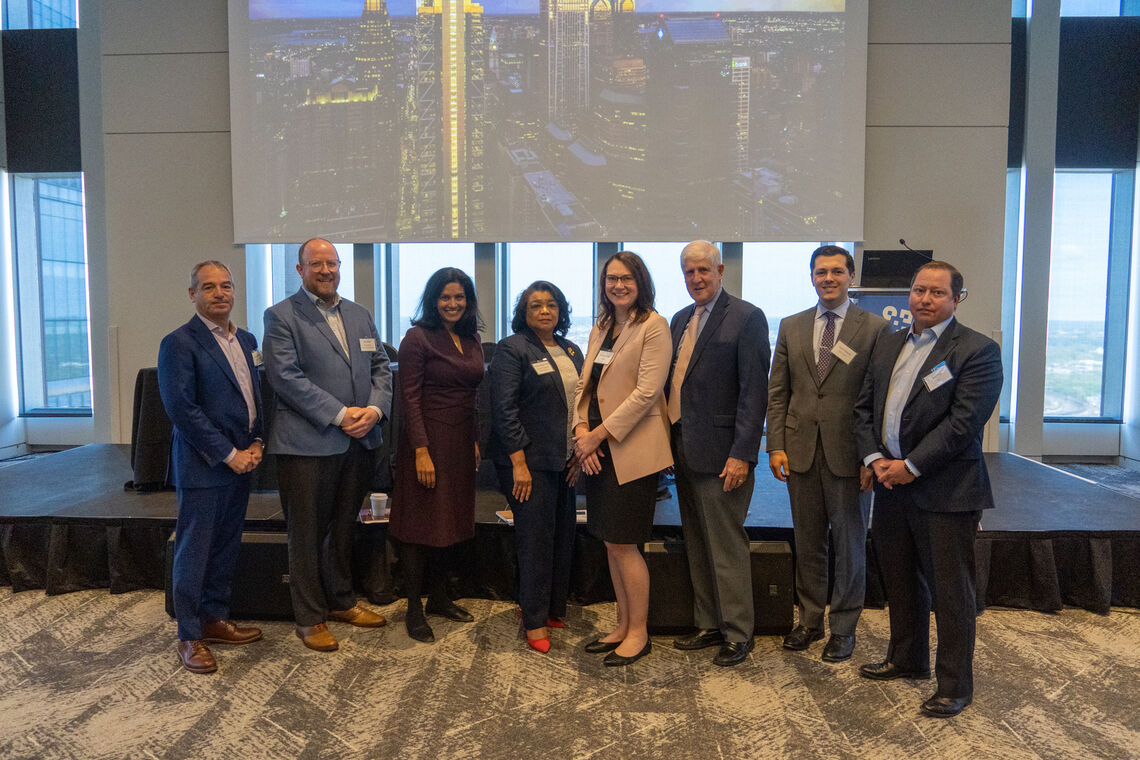
This idea of changing habits continued throughout the discussion. While remote work and hybrid work will have a lasting impact, what matters for continued vitality in the downtown is restoring older habits. Gupta said: “Whether it's seeing arts and culture, going to work, taking the train, taking the bus … that interdependent ecosystem is what makes downtown the place of opportunity in the heart of the city.”
Office Usage Based on Functions, Not Industries
As expected, there have been many shifts in the status of the idea of a downtown office. Our December 2022 CPDC discussion noted the need for building owners and downtown businesses to transform the perception and make the office a destination, rather than an obligation. This trend has continued, with Beares and Ade noting how buildings that have capital are investing it into their spaces to differentiate themselves from the traditional workspace by making their buildings more collaborative and incorporating amenities to attract employers.
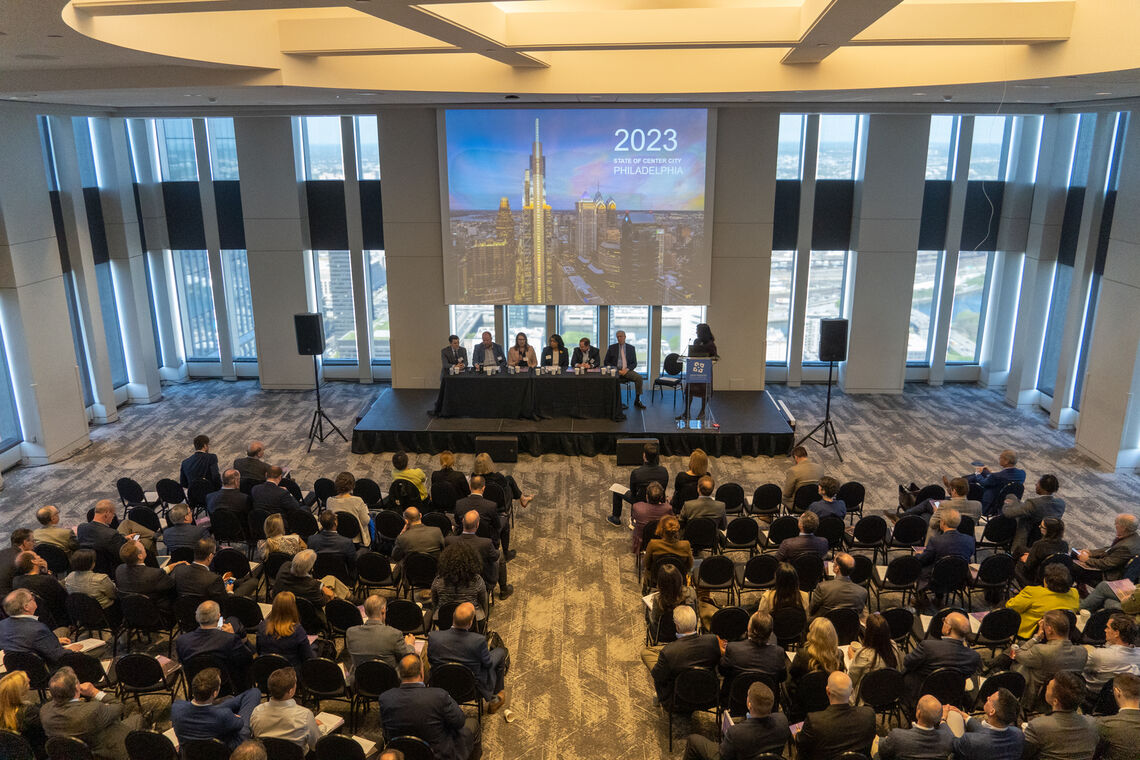
While many businesses may be downsizing their office footprint, their rent payment is not decreasing because they are choosing to pay for higher quality space. And even this downsizing is not universal; for example, insurance giant Chubb is moving into a new 400,000 square foot space, which, Beares noted, contradicts the current trend.
She tied it to the notion that the benefits of remote work are less about the job sector as much as other human factors: “We need to start looking at the individual and creating the office as a magnet for interaction. Having a place for people to do quiet work, approaching diversity, both from the standpoint that we're typically talking about but also from the standpoint of neurodiversity and job function.”
Opportunities with Open Spaces
Historically, Philadelphia has had a strength in terms of adapting historic buildings and office spaces into other uses like residential, hospitality, or, more recently, life sciences. However, complications remain.
For many buildings, an obstacle may be the current occupancy. While a building may be 70% vacant, that does mean 30% of it is occupied. And with average lease times being approximately seven years, landlords simply can’t empty out the remaining tenants and need to think further ahead in terms of adjusting their weighted average lease terms, which can have an impact on loans and financing.
Over the years, one consideration that benefited conversions was the pre-existing floor plans. A recent New York Times story highlighted the difficulty with some conversions, including several in New York City since they do not have the appropriate layout because of elements like distance from windows and natural light, as in 180 Water Street, and the placement of columns and structural elements. As Ade stated: “the physicality of the building really is going to ultimately help determine that.”
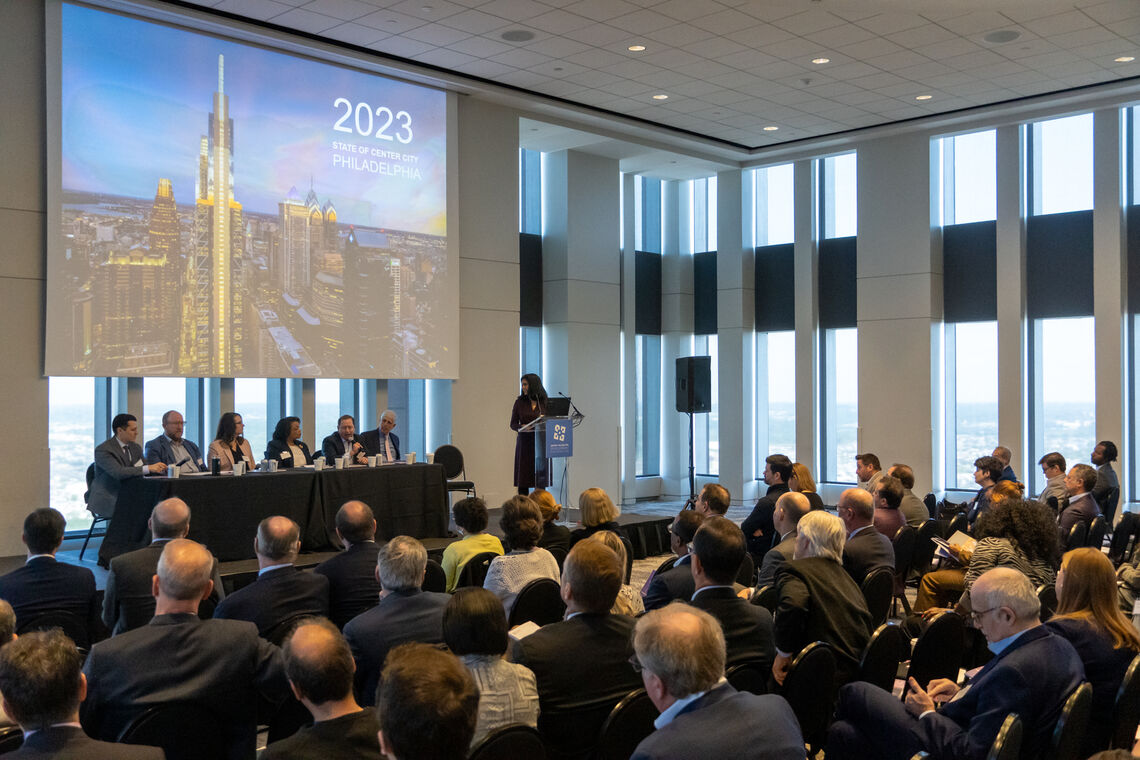
One opportunity explored more internationally is the potential to split usage by floor. While Center City’s CMX-5 zoning provides more flexibility than seen in most other major downtowns across the nation, which allows for retail and residential uses in a building, Parente pointed out even larger opportunities to consider: “Recently in a building there was a hotel on one floor, then an office, then another hotel floor above. So it does happen in other places. I think there's no reason it couldn't happen here.”
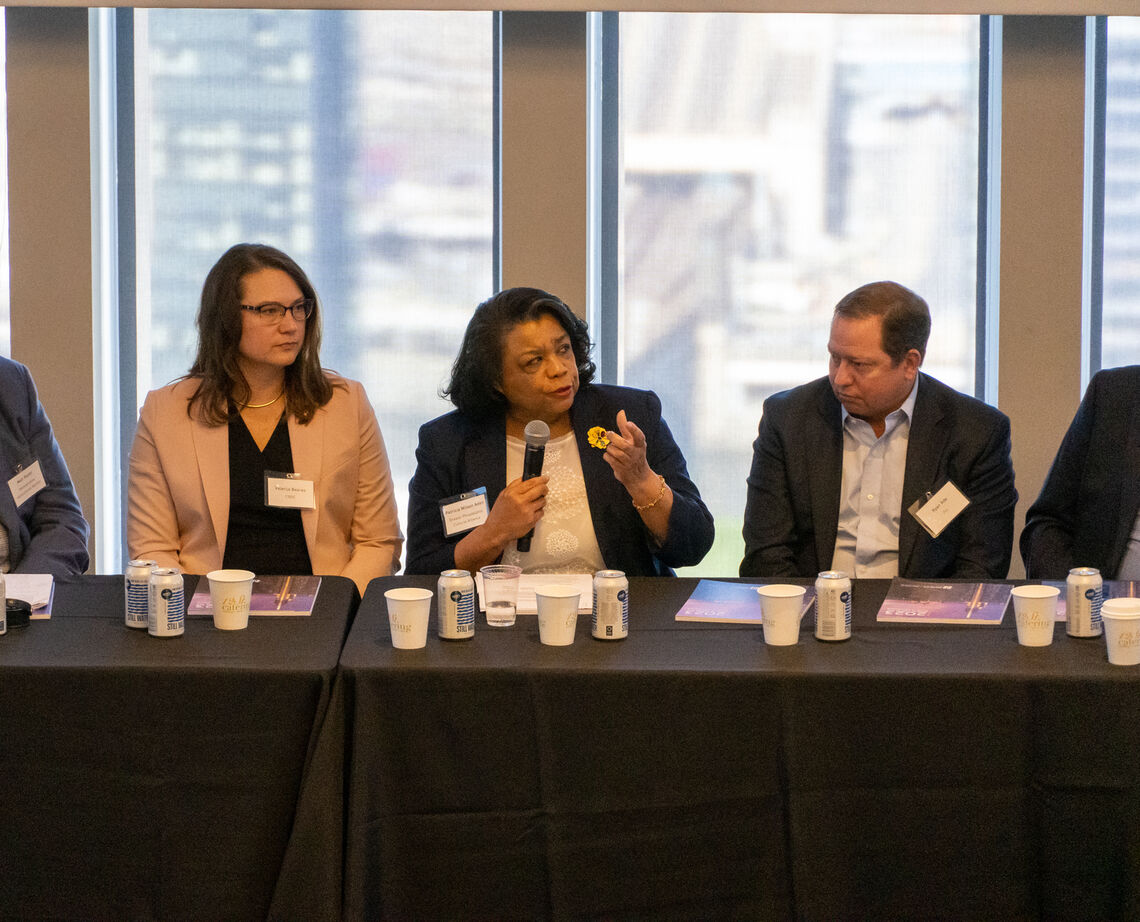
“The Magnet and the Multiplier”
For many people, one of the greatest features of our downtown is the diversity of artistic and cultural happenings so near to everyday life. The pandemic was a major disruption to those experiences; while 2008’s recession resulted in a 12% decline in revenue for those institutions, 2020 resulted in closer to 34%, noted Aden. And this has had longer-term effects as almost half institutions were working at a lower capacity, meaning smaller staffs and fewer programs being offered.
The economic impact for these experiences in the city is massive. As noted in our Spring Vitality Report, foot traffic during the Flower Show quadrupled in the Pennsylvania Convention Center area, and nearly doubled in Chinatown. Aden described it as “the magnet and the multiplier,” where people come to Center City for the arts and culture, but stay and do much more: “What did those people do? They parked, they ate in restaurants, they sometimes spent the night in our hotels. So that dollar turned over again and again and again, because of that arts and culture offering.”
However, budgets for these organizations remain tight; even for major events, such as the Flower Show, Rader said, “These were breakeven businesses at best historically, and so you have to think of them more like infrastructure like SEPTA.”
For most of these, a majority of funding comes from paid attendance, not from philanthropy as one would commonly assume. That means that for continued viability and success, there needs to be an emerging, clear leader, who helps integrate new audiences and businesses into the vibrant arts and culture community.
“A Revolution of Innovation instead of Stagnation”
For the next group of political leaders, several large opportunities await across sectors. And one key factor across all of the sectors discussed is the need to grow through innovation and partnerships between public, nonprofit, and private organizations.
From a capital markets perspective, Ade emphasized the need for Philadelphia’s presence on the national stage since institutions with capital “have their choice of the entire country.” Business friendly policies, and continued job growth, help keep Philadelphia competitive. However, Parente said, it’s crucial to communicate why this kind of growth is good: while not everyone lives in Center City, the growth that helps the downtown helps the city and region as a whole.
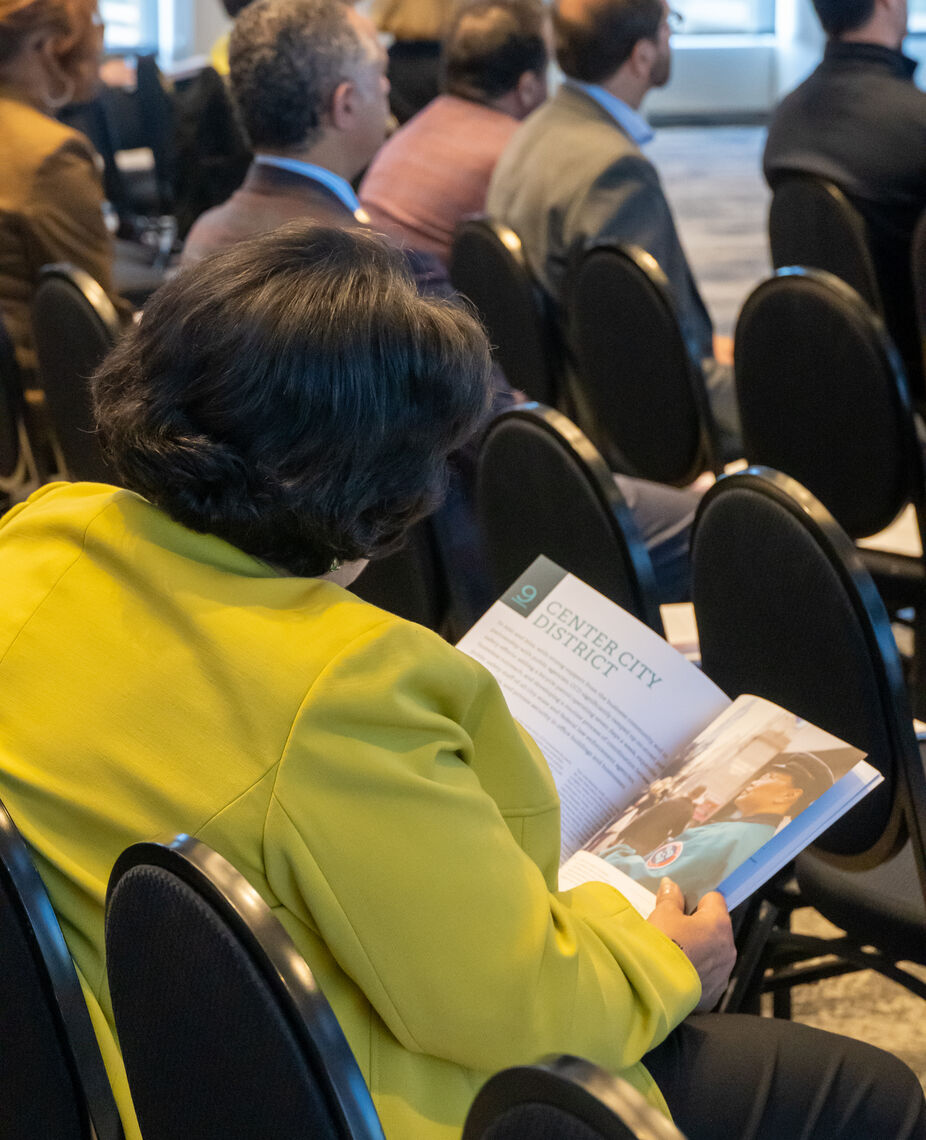
For arts and culture moving forward, Aden notes the need for a champion, who doesn’t just rely on philanthropy to sustain arts and cultural institutions: “We're looking for a leader who will understand that the public sector also has a role in supporting arts and culture through policies, through public funding, through being that champion, that voice that says ‘arts and culture is that valued asset.’”
Despite all of these diverse perspectives and needs, it is all achievable. Beares noted there’s an opportunity for a revolution of innovation instead of stagnation: “The baseline [to become agile] is collaboration and public private partnerships… If we start to come to meetings, asking questions rather than coming with solutions and our own initiatives, we start to make change.”
The need for innovation reflects Rader’s sentiment, when his team needed to plan for the Flower Show after the pandemic began: “The only way through a crisis is to innovate and grow. There simply is no sitting and waiting to see what happens next. You … put it aside, get over it, and figure out what you're going to do next.”
Innovations and collaborations have always been part of our city. Most recently, 2022’s 10.6% decrease in major crimes within the CCD resulted from partnerships between the CCD, public agencies and private organizations. The robust expansion of the life science sector is cultivated by growth across communities and the diverse benefits of Philadelphia. As Beares noted, “Cities are living organisms that need to continue to change.”
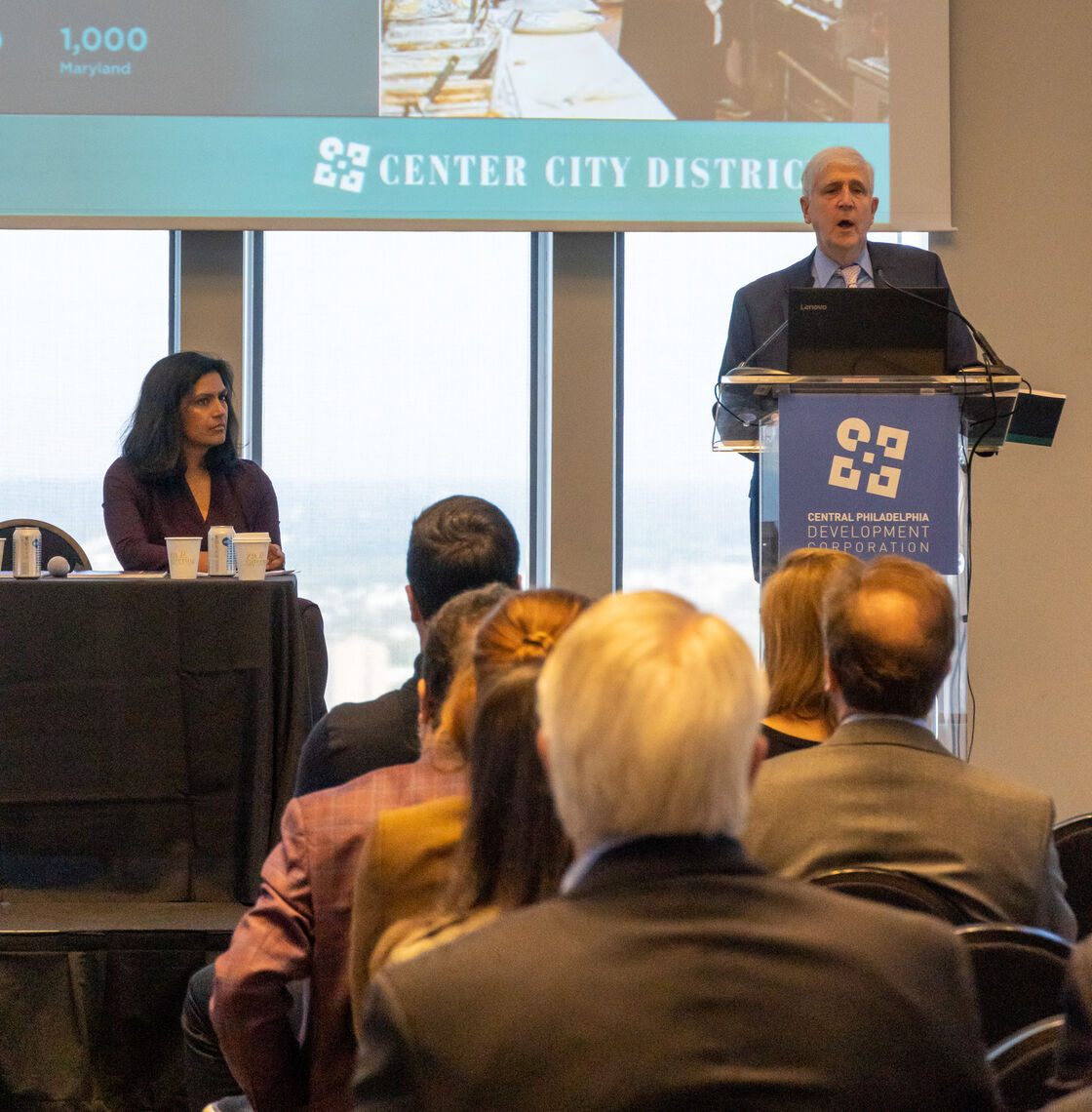
Key Takeaways and How You Can Get Involved
“If there’s any great resignation out there, it’s the resignation of those people who think they are powerless to do anything about empty streets,” noted Levy at the end of his remarks. “What we really need to commit to is the idea that cities are not the passive result of immutable trends that happen to us. Cities are the product of leadership.”
To learn more about the trends discussed, check out our annual report, The State of Center City Philadelphia 2023. And to get access to these exclusive member events, learn more about becoming a member of the Central Philadelphia Development Corporation.